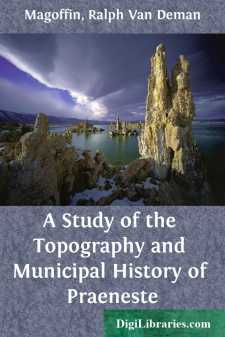Categories
- Antiques & Collectibles 13
- Architecture 36
- Art 48
- Bibles 22
- Biography & Autobiography 813
- Body, Mind & Spirit 142
- Business & Economics 28
- Children's Books 17
- Children's Fiction 14
- Computers 4
- Cooking 94
- Crafts & Hobbies 4
- Drama 346
- Education 46
- Family & Relationships 57
- Fiction 11829
- Games 19
- Gardening 17
- Health & Fitness 34
- History 1377
- House & Home 1
- Humor 147
- Juvenile Fiction 1873
- Juvenile Nonfiction 202
- Language Arts & Disciplines 88
- Law 16
- Literary Collections 686
- Literary Criticism 179
- Mathematics 13
- Medical 41
- Music 40
- Nature 179
- Non-Classifiable 1768
- Performing Arts 7
- Periodicals 1453
- Philosophy 64
- Photography 2
- Poetry 896
- Political Science 203
- Psychology 42
- Reference 154
- Religion 513
- Science 126
- Self-Help 84
- Social Science 81
- Sports & Recreation 34
- Study Aids 3
- Technology & Engineering 59
- Transportation 23
- Travel 463
- True Crime 29
A Study of the Topography and Municipal History of Praeneste
Description:
Excerpt
CHAPTER I.
Nearly a half mile out from the rugged Sabine mountains, standing clear from them, and directly in front of the sinuous little valley which the northernmost headstream of the Trerus made for itself, rises a conspicuous and commanding mountain, two thousand three hundred and eighteen feet above the level of the sea, and something more than half that height above the plain below. This limestone mountain, the modern Monte Glicestro, presents on the north a precipitous and unapproachable side to the Sabines, but turns a fairer face to the southern and western plain. From its conical summit the mountain stretches steeply down toward the southwest, dividing almost at once into two rounded slopes, one of which, the Colle di S. Martino, faces nearly west, the other in a direction a little west of south. On this latter slope is situated the modern Palestrina, which is built on the site of the ancient Præneste.
From the summit of the mountain, where the arx or citadel was, it becomes clear at once why Præneste occupied a proud and commanding position among the towns of Latium. The city, clambering up the slope on its terraces, occupied a notably strong position, and the citadel was wholly impregnable to assault. Below and south of the city stretched fertile land easy of access to the Prænestines, and sufficiently distant from other strong Latin towns to be safe for regular cultivation. Further, there is to be added to the fortunate situation of Præneste with regard to her own territory and that of her contiguous dependencies, her position at a spot which almost forced upon her a wide territorial influence, for Monte Glicestro faces exactly the wide and deep depression between the Volscian mountains and the Alban Hills, and is at the same time at the head of the Trerus-Liris valley. Thus Præneste at once commanded not only one of the passes back into the highland country of the Æquians, but also the inland routes between Upper and Lower Italy, the roads which made relations possible between the Hernicans, Volscians, Samnites, and Latins. From Præneste the movements of Volscians and Latins, even beyond the Alban Hills and on down in the Pontine district, could be seen, and any hostile demonstrations could be prepared against or forestalled. In short, Præneste held the key to Rome from the south.
Monte Glicestro is of limestone pushed up through the tertiary crust by volcanic forces, but the long ridges which run off to the northwest are of lava, while the shorter and wider ones extending toward the southwest are of tufa. These ridges are from three to seven miles in length. It is shown either by remains of roads and foundations or (in three cases) by the actual presence of modern towns that in antiquity the tip of almost every one of these ridges was occupied by a city. The whole of the tufa and lava plain that stretches out from Præneste toward the Roman Campagna is flat to the eye, and the towns on the tips of the ridges seem so low that their strong military position is overlooked....


